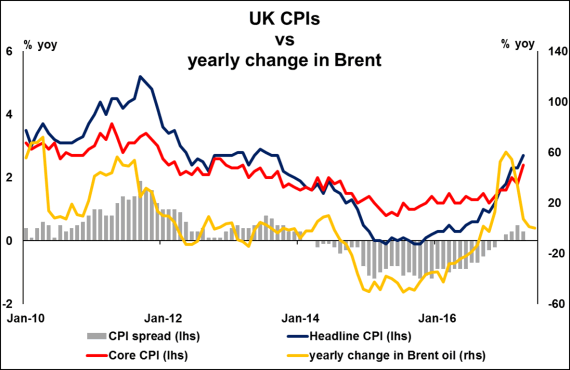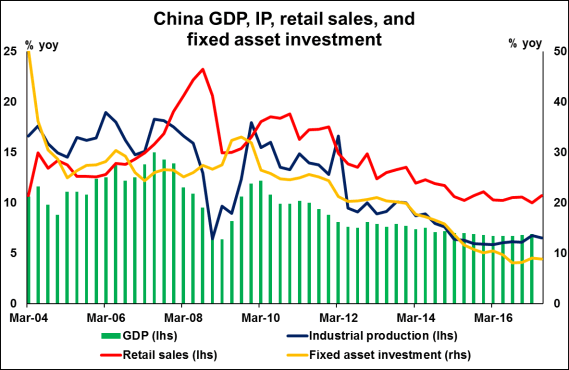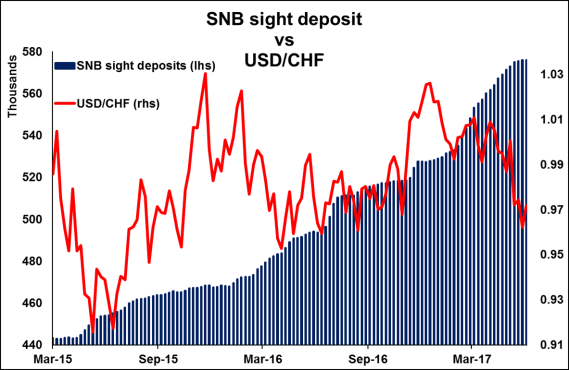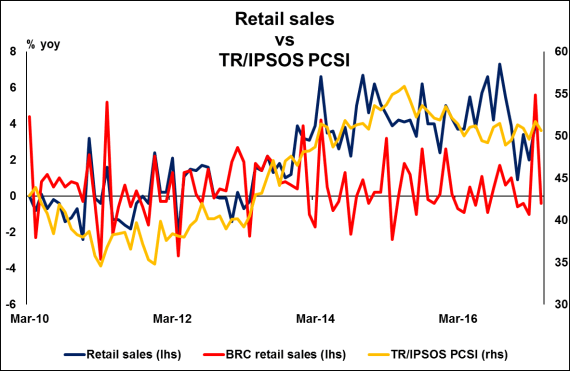Next week’s market movers
- In the US, the FOMC is almost certain to raise interest rates, according to market pricing. Thus, focus will probably be on what signals policymakers send regarding the pace of future hikes.
- The BoE is expected to remain on hold. Even though the market may pay some attention to this meeting, given the UK’s political situation, monetary policy is likely to be overshadowed by political developments in the short term.
- The BoJ and the SNB are both anticipated to keep their policies unchanged as well.
- We also get key economic data from the UK, the US, China, Australia, and New Zealand.
On Monday, we have a relatively quiet day, with no major events or indicators due to be released.
On Tuesday, the UK CPI data for May will be released. The forecast is for both the headline and the core rates to have remained unchanged. We view the risks surrounding those forecasts as skewed to the downside, perhaps for a slight pullback, considering that the nation’s services PMI for the month showed the weakest increase in prices charged by service-sector firms since November. In any case, we think that market focus on the day is likely to be on politics rather than economics. Tuesday will be the first day the new UK Parliament meets, and also the first deadline Theresa May will have to put together a deal for keeping herself in power. May will likely have to reach a deal with another party in order to achieve a majority in the House of Commons. If she fails to present such a plan, then the focus turns to the 19th of June. On that day, Parliament will vote on the Queen’s speech, a list of the laws the government hopes to get approved over the coming year. If Parliament rejects the Queen’s speech, then Labour leader Jeremy Corbyn could be invited to form a government.

On Wednesday, in the US, all eyes will be on the much-awaited FOMC policy announcement. This will be one of the "bigger" meetings, meaning that besides the rate decision we will also get fresh economic forecasts for the US economy, an updated "dot plot", as well as a press conference by Chair Yellen. The forecast is for the Committee to raise borrowing costs by 25bps, something overwhelmingly supported by market pricing, which indicates a 99.6% probability for such action. Given that a rate hike is fully priced in at this stage, we think that market focus on the day will be on what signals policymakers send regarding the pace of future hikes and specifically, on any potential changes to the "dot plot". In addition, market participants will be looking for clues as to when the Fed will begin normalizing its enormous balance sheet, as the minutes of the May meeting showed "nearly all policymakers" expected it to start later this year.

On balance, we think that the risks surrounding the dollar’s reaction from this meeting may be tilted to the downside. In our view, policymakers are highly unlikely to accompany this rate hike with hawkish signals, considering the recent streak of disappointing economic data and developments. Slowing inflation, a sharp decline in inflation expectations, flat wage growth, and diminished expectations regarding the prospect of fiscal stimulus, are all solid arguments supporting a "dovish hike" by policymakers. Our view is enhanced by the latest comments from Fed Board Governor Brainard, who indicated that she sees some tensions between progress in employment and lack of progress on inflation. She added that if this persists, it may lead her to reassess her expectations with regards to the path of the Federal funds rate.
As for the US indicators, we get CPI and retail sales data, all for May. Kicking off with the CPIs, the headline rate is expected to have declined again, albeit marginally. The core rate is anticipated to have held steady. Even though a decline in the headline rate could be a somewhat discouraging development, as long as it remains above the Fed’s target and the core rate remains unchanged as expected, we doubt that these data will be a game-changer for FOMC officials.

As for the US retail sales, the forecast is for both the headline and the core rates to have ticked down from previously, but to have remained within the positive territory. The consensus for a slight slowdown in sales is somewhat supported by the nation’s consumer sentiment indices for the month. The Conference Board index declined, while the U of M figure remained more or less unchanged. In any case, considering that investors will probably have their gaze locked on the FOMC decision later in the day, a slight slowdown in sales may attract less attention than usual.

In the UK, employment data for April are due out, though no forecast is available yet. Our own view is that the unemployment rate likely remained unchanged, with risks titled to the downside, while average weekly earnings may have risen at the same pace as previously, with risks skewed towards an acceleration. The nation’s services PMI for April indicated that job creation in the sector picked up to a four-month high, and that companies reported a strong rise in costs, due to higher salary payments among other factors. Considering that the service-sector accounts for roughly 80% of the nation’s GDP, we consider it a decent gauge of the overall economy. However, nominal wages have to accelerate by more than April’s inflation for real wages to turn back positive.

In China, focus will be on retail sales, industrial production and fixed asset investment, all for May. All of these figures are expected to have slowed, something that would likely add credibility to the recent signals from the nation’s PMIs that economic growth may be easing again. Even though a potential slowdown in all of these indicators would probably be worrisome for the PBoC, we doubt that it will lead to any policy action anytime soon. The Bank has been tightening its policy recently despite signs of slowdown in economic growth and cooling inflationary pressures, mainly in order to curb financial stability risks, such as rapidly rising housing prices.

On Thursday, the Bank of England meets to decide on monetary policy. Expectations are for the MPC to keep policy untouched via a 7-1 vote. Once again, the lone dissenter is very likely to be Kristin Forbes, who has voted in favor of a rate increase in the last two meetings. Nevertheless, this will be the last gathering she participates in as an MPC member and thus, another dissent by her may carry little-to-no importance for market participants. Since the Bank’s latest gathering, CPI data showed that inflation accelerated to +2.7% yoy in April from +2.3% yoy the previous month, which is in line with the Bank’s forecast for the year, while GDP slowed notably in the first 3 months of the year. These data combined with the fact that in its latest Inflation Report, the Bank downgraded its inflation forecasts for 2018 and 2019, confirm our view that the BoE is likely to remain on hold for this year, and possibly beyond. Just for the record, according to the pound sterling overnight index swaps, the market sees interest rates rising only 10 basis points by 2020. In any case, considering the UK’s political situation, with a hung parliament generating uncertainty and the Brexit negotiations set to begin soon, we think that monetary policy considerations will be overshadowed by political developments, at least over the next few weeks.

In Switzerland, the SNB will announce its rate decision and the forecast is for the Bank to keep its policy unchanged. Economic developments have been mixed since the SNB’s latest meeting in March. On the inflation front, the CPI rate dropped in April, but rebounded somewhat in May. The unemployment rate ticked down and GDP growth accelerated in Q1, albeit slightly. As for the all-important franc, it appreciated against the dollar, but lost some ground against the euro. Given these mixed developments, we don’t expect the SNB to change tune. We think policymakers are likely to repeat the usual mantra – that the franc remains significantly overvalued and that the Bank will remain active in the FX market as necessary in order to curb gains in the currency.

As for the economic data, in the UK, retail sales for May are due out and the forecast is for a decline following a remarkable +2.3% mom surge in April. The forecast is supported by the BRC retail sales monitor, which plunged during the month, with the yearly rate dropping to -0.4% from +5.6% previously. What’s more, consumer sentiment indices were downbeat in the month, on balance. The TR/IPSOS figure declined and while the Gfk index rose, it did not manage to escape the negative territory.

From New Zealand, we get GDP data for Q1. Without a forecast available, we see the case for the economy to have grown at the same pace as previously, with risks skewed to the upside. Economic indicators for Q1 painted a relatively upbeat picture. Retail sales accelerated notably in Q1, while the labor market continued to tighten at a very robust pace. However, even in case the GDP print is strong, we doubt that it will have much impact on the RBNZ’s cautious bias. In its latest statement, the Bank made it clear that although domestic economic data are improving, numerous uncertainties remain and policy may need to adjust accordingly. Considering that policymakers were probably referring to global uncertainties, and that there have been signs of slowdown in China since that meeting, we think that for the time being, the RBNZ may continue to "look through" encouraging data.

In Australia, employment data for May will be in focus. The forecast is for the unemployment rate to have held steady after declining to 5.7% in April from 5.9% previously. The net change in employment is expected to have declined somewhat, but to have remained in positive territory. The forecast for another month of decent employment gains is supported by the ANZ job advertisements indicator, which showed that job ads rose again in May, though at a slower pace.

On Friday, during the Asian morning, the BoJ policy announcement will be in the spotlight. Looking back at the latest gathering, the Bank upgraded its assessment for the Japanese economy, but revised down its inflation forecasts. Ever since, developments on both of those fronts have been encouraging, on balance. In Q1, the economy grew at the same pace as the previous quarter, while the BoJ’s core CPI rate for April rose, albeit marginally. In addition, the nation’s forward-looking Tokyo core CPI rate for May rose and entered the positive territory for the first time since late 2015. Last but not least, wages surged by more than anticipated in April, which is likely to be pleasant news for policymakers, as wage growth is seen as a signal of future inflation. Nevertheless, we do not expect such modest signs of progress to lead to any change in the BoJ’s QQE with yield-curve control framework, at least for the next few meetings.















